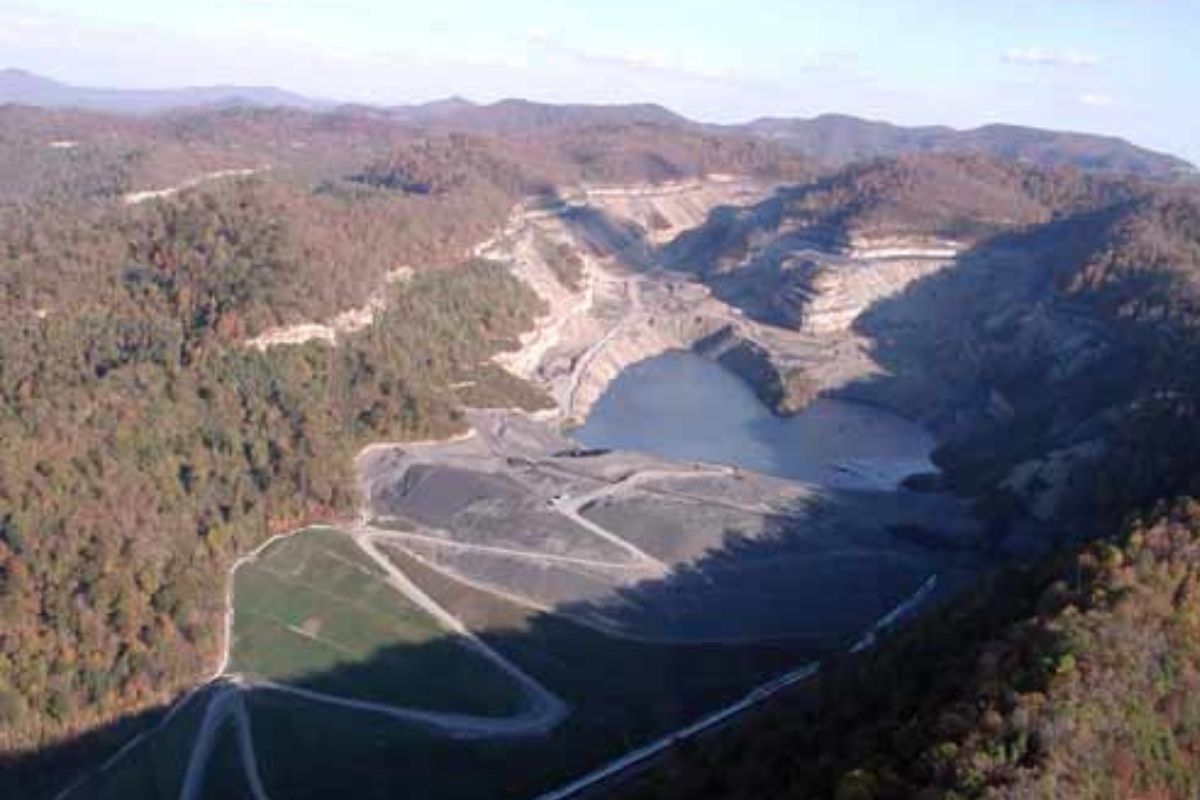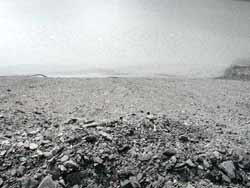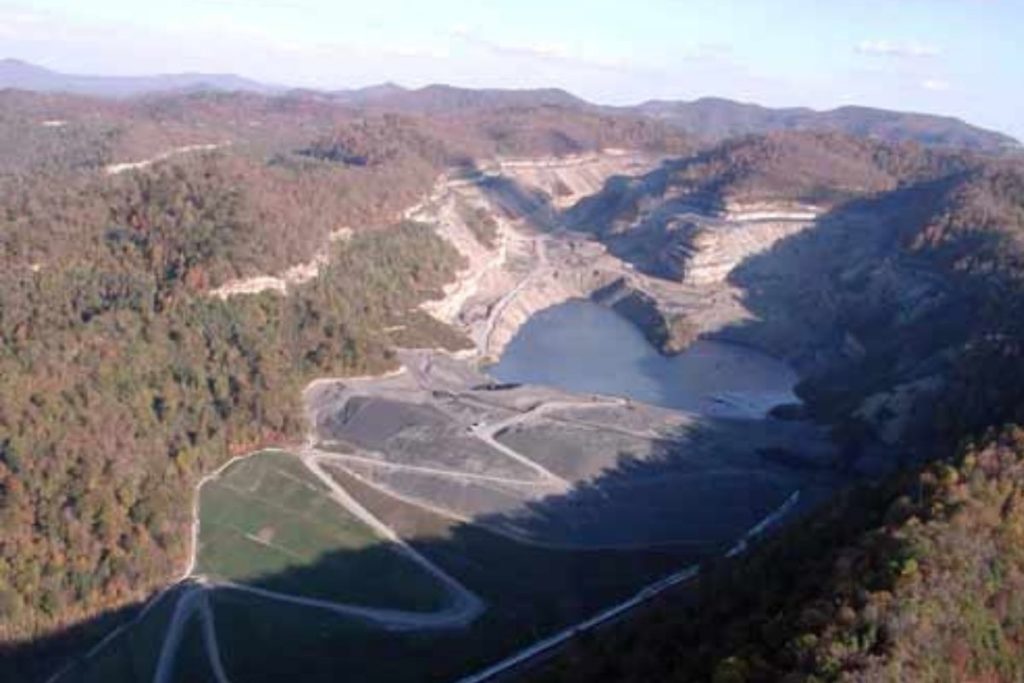
Coal in the classroom
Opposition to mountaintop removal mining is becoming part of the curriculum at a growing number of colleges and universities.
On Election Day, Dave Cooper stood in the President’s Dining Room at Hollins University and made a solemn announcement.
“I’m an environmental activist,” he told more than two dozen college students who had carried their lunch down the hall. “To some people, that means ‘wacko.’ “
Cooper is an engineer by training, a former employee of 3M who quit that job to spread the word about mountaintop removal coal mining.
Supported by honorariums from colleges and contributions from environmental organizations, he takes the Mountaintop Removal Road Show around the eastern United States.
“That helps cover my travel expenses but mostly I sleep on couches and eat peanut butter sandwiches and cereal,” the 47-year-old Cooper e-mailed between sessions in Ohio.
He’s in the middle of a 12-state tour, appearing often on college campuses. He used to visit student environmental groups. Now, he often brings opposition to mountaintop removal mining into the classroom as well.
More than one professor has called that a no-brainer.
RU professor Jeremy Wojdak was happy to have Cooper address his pollution biology class. Students have read and talked a lot about theory, Wojdak said. The roadshow was their introduction to how issues play out in the real world.
“I think, at the very least, hearing someone with first-hand experience gets the students’ attention in a way that won’t if I tell them,” Wojdak said.
Laura Meder, an Averett University professor who teaches courses in environmental problems and environmental policy and law, said, “I wanted people to get a chance to hear from people who face this in their daily lives. For these two classes that I teach it’s a really good real-life example.”
Last year, Cooper brought Pauline Canterberry and Mary Miller to Meder’s Danville classroom. The two elderly women brought bags of coal dust that had settled on their porch and stories about a mine and processing plant devaluing their home and degrading their lives.
This time Cooper brought Eric Blevins, a recent graduate of Middle Tennessee State University, who helped convince students to impose a fee on themselves so the university could buy electricity from renewable sources.
The hair Cooper has left is short. He favours khakis and a tweed jacket.
Blevins’ hair falls halfway down his back. He’s bearded. He wears jeans and a long-sleeved T-shirt with the “Defend what you love” printed across the front.
They have a bifurcated routine. Cooper lays out the problem, explaining the mountaintop removal process and playing a DVD or slide show that expands on what he’s said. Then Blevins suggests things that can be done about it.
Cooper and Blevins rolled the roadshow into a Radford University classroom a little more than a week ago. It was early afternoon. The room was warm and stuffy. Nevertheless — with the exception of one young man who wrestled with his apparently leaden eyelids — Cooper and Blevins held the undergraduates’ attention through explanations of federal mining laws and descriptions of the effects of mountaintop removal mining.
The students heard about valley fills, blackwater spills, overburden, floods and approximate original contour. About 3 million pounds of explosives are used on Appalachian strip mines every day, Cooper told the students.
Jennifer Bowman shook her head, her eyes widening as the statistics and pictures flashed by.
She knew about mountaintop removal mining, but the scale surprised her.
“I don’t know how we can do something as bad as this and get away with it,” Bowman said. “I just think it’s really sad and something ought to be done about it.”
That’s the response Cooper hopes for. He passes out clipboards at each session, asking students to sign up if they’re interested in learning more or helping the cause.
“If you’re really, really interested, put a star by your name,” he said in Radford.
At Radford, he also promoted a gathering at Kayford Mountain, W.Va., a site that’s become familiar to people familiar with the anti-mountaintop removal movement. The remnants of Larry Gibson’s family farm is surrounded by mountaintop removal mines. Marsh Fork Elementary School is near the foot of Kayford Mountain. A mountaintop removal mine, with the attendant sludge pond and coal silo, looms over the school.
About 60 students visited Gibson the weekend after Cooper and Blevins visited Radford. A third of those students came from Radford University.
Julia Hasty, a member of the school’s Green Team, was among them.
“This weekend woke me up,” she wrote in an e-mail the day after returning. “It was definitely an emotional experience. On Saturday night we all gathered around a fire and talked about all we had seen and felt. … It was really sad when we left. It was sad to me that I was going back to a coal-dependent university that was paid for by the blood and children of the people that I had met and befriended in the Appalachian mountains in West Virginia.
“I swear I’ll make a change. I just need help.”
Meder wishes she’d hear more talk like that from her students.
“This is not a very activist campus,” she said of Averett. “I wish that it were.”
At Hollins, Godard is trying to get students interested in environmental issues by relating them to social justice issues.
“It’s this big push we’ve got going and these guys are part of it,” Godard said.
There’s apparently no similar push to bring pro-mining forces into college classrooms.
The Virginia Center for Coal and Energy Research, which is working on clean coal technology, is based at Virginia Tech. The Powell River Project, which explores ways to reuse land that’s been surface-mined, has roots at Tech, too. Both groups have educational programs, but they are aimed at elementary or high school students.
Wojdak, the Radford professor, said he’s sure the one-sidedness of the presentation disturbs some students, but there’s only so much he can do about that.
“They’re our one and only guest speaker,” Wojdak said, “for budgetary reasons.”



